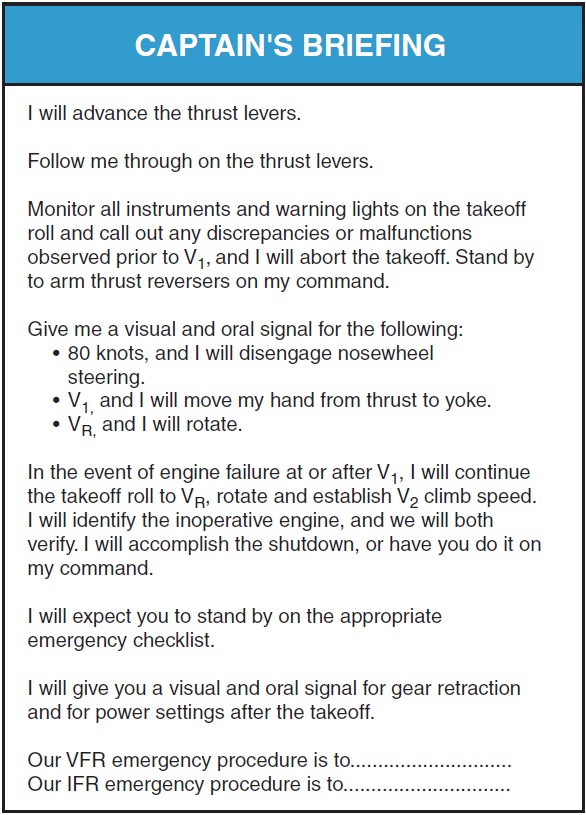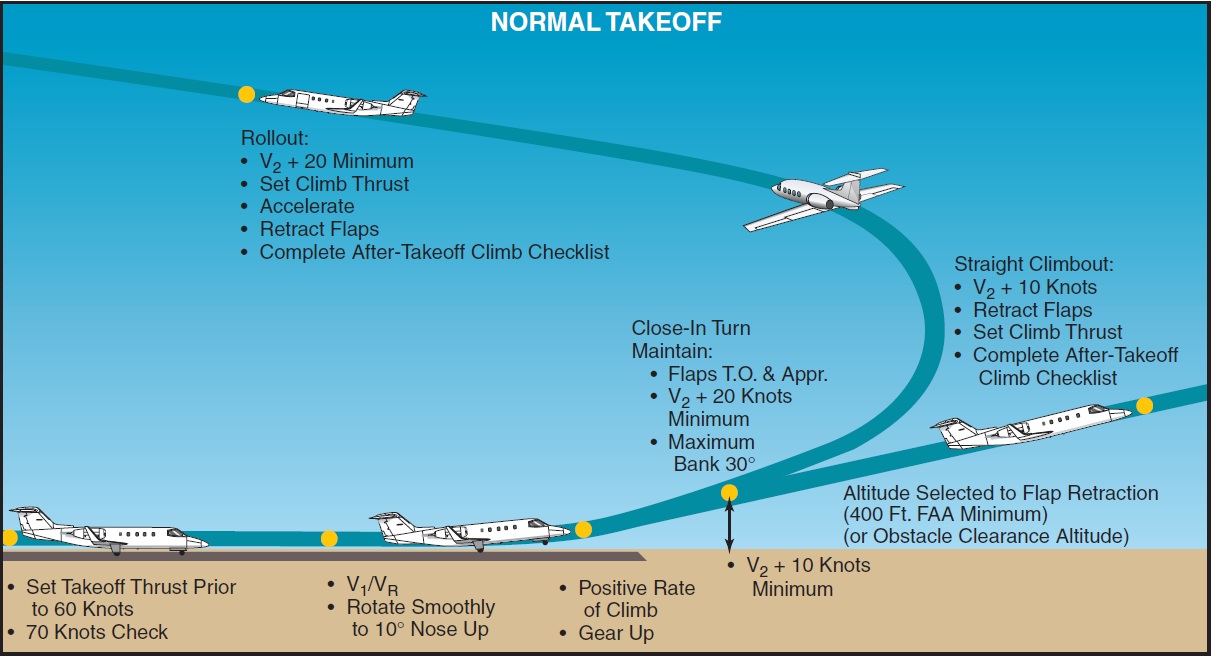
Chapter 15-Transition to Jet Powered Airplanes
Table of Contents
General
Jet Engine Basics
Operating the Jet Engine
Jet Engine Ignition
Continuous Ignition
Fuel Heaters
Setting Power
Thrust to Thrust Lever Relationship
Variation of Thrust with RPM
Slow Acceleration of the Jet Engine
Jet Engine Efficiency
Absence of Propeller Effect
Absence of Propeller Slipstream
Absence of Propeller Drag
Speed Margins
Recovery from Overspeed Conditions
Mach Buffet Boundaries
Low Speed Flight
Stalls
Drag Devices
Thrust Reversers
Pilot Sensations in Jet Flying
Jet Airplane Takeoff and Climb
V-Speeds
Pre-Takeoff Procedures
Takeoff Roll
Rotation and Lift-Off
Initial Climb
Jet Airplane Approach and Landing
Landing Requirements
Landing Speeds
Significant Differences
The Stabilized Approach
Approach Speed
Glidepath Control
The Flare
Touchdown and Rollout

PRE-TAKEOFF PROCEDURES
Takeoff data, including V1/VR and V2 speeds, takeoff power settings, and required field length should be computed prior to each takeoff and recorded on a takeoff data card. These data will be based on airplane weight, runway length available, runway gradient, field temperature, field barometric pressure, wind, icing conditions, and runway condition. Both pilots should separately compute the takeoff data and cross-check in the cockpit with the takeoff data card.
15-16 Ch 15.qxd 5/7/04 10:22 AM Page 15-17
Figure 15-20. Sample captainÆs briefing.
A captainÆs briefing is an essential part of cockpit resource management (CRM) procedures and should be accomplished just prior to takeoff. [Figure 15-20] The captainÆs briefing is an opportunity to review crew coordination procedures for takeoff, which is always the most critical portion of a flight.
The takeoff and climb-out should be accomplished in accordance with a standard takeoff and departure profile developed for the particular make and model airplane. [Figure 15-21]

Figure 15-21. Takeoff and departure profile.
PED Publication